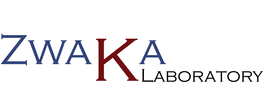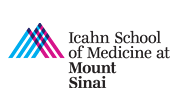Understanding Mammalian Cellular Diversity
Comprehending how mammalian cells with apparently identical genetic background acquire their extraordinarily specific, stable and yet extremely diverse phenotypes poses one of the most daunting challenges of modern biomedical research. Until the molecular principles that govern branching and maintenance of the basic cellular lineages in the embryo and in the mature organism become clear, it will not be possible to fully address persistent questions in developmental biology, regenerative medicine, cancer biology, and the pathophysiology of degenerative diseases.
Embryonic stem (ES) and ES-like cells (induced pluripotent stem cells, iPS) afford ideal model systems for unraveling the complex molecular networks that give rise to cellular identity. They are relatively easy to generate and maintain in culture and are amenable to manipulation with the growing repertoire of molecular research tools now in the hands of cell biologists. More importantly, they have the property of pluripotency, meaning that they can differentiate to many cell types in the body, even to germ cells. Several groups believe that a small core set of regulatory factors, including Pou5f1 (encoding the Oct4 protein), Sox2 and Nanog, maintain ES cells in the pluripotent state by acting on a limited number of target genes. This fundamental concept has generated enormous excitement in the biomedical community, leading to successful reprogramming of somatic cells to an ES-like state. Yet, recent discoveries in our laboratory suggest that the complement of factors needed to direct ES cell pluripotency is considerably larger than originally thought.
We plan to generate a comprehensive list of pluripotency factors that would serve as foundation for identifying alternative networks of key factors involved in the maintenance of pluripotency. This quest will include candidate proteins we have already identified (e.g., Ronin) as well as others known to be associated with stem cell self-renewal and differentiation function. The most obvious question raised by the discovery of novel pluripotency factors is whether they could be used, either alone or in combination to reprogram somatic cells to an ES cell-like state (iPS cells). Such studies are under way in our lab, and early indications are that such manipulation is not only feasible, but will add significantly to the body of knowledge on stem cell regulation. Most exciting, perhaps, is the possibility that some of these factors are not specific for a particular cellular state but rather open up the epigenome to other factors that can effectively change the epigenetic landscape towards a different cell type. Thus, cellular reprogramming may not be limited to iPS cells but may also allow differentiation from one somatic cell type to another assuming that the appropriate core set of regulation genes is found. In this way, our laboratory hopes to make important new advances towards a greater understanding of pluripotency and its use in medical and nonmedical settings.
Embryonic stem (ES) and ES-like cells (induced pluripotent stem cells, iPS) afford ideal model systems for unraveling the complex molecular networks that give rise to cellular identity. They are relatively easy to generate and maintain in culture and are amenable to manipulation with the growing repertoire of molecular research tools now in the hands of cell biologists. More importantly, they have the property of pluripotency, meaning that they can differentiate to many cell types in the body, even to germ cells. Several groups believe that a small core set of regulatory factors, including Pou5f1 (encoding the Oct4 protein), Sox2 and Nanog, maintain ES cells in the pluripotent state by acting on a limited number of target genes. This fundamental concept has generated enormous excitement in the biomedical community, leading to successful reprogramming of somatic cells to an ES-like state. Yet, recent discoveries in our laboratory suggest that the complement of factors needed to direct ES cell pluripotency is considerably larger than originally thought.
We plan to generate a comprehensive list of pluripotency factors that would serve as foundation for identifying alternative networks of key factors involved in the maintenance of pluripotency. This quest will include candidate proteins we have already identified (e.g., Ronin) as well as others known to be associated with stem cell self-renewal and differentiation function. The most obvious question raised by the discovery of novel pluripotency factors is whether they could be used, either alone or in combination to reprogram somatic cells to an ES cell-like state (iPS cells). Such studies are under way in our lab, and early indications are that such manipulation is not only feasible, but will add significantly to the body of knowledge on stem cell regulation. Most exciting, perhaps, is the possibility that some of these factors are not specific for a particular cellular state but rather open up the epigenome to other factors that can effectively change the epigenetic landscape towards a different cell type. Thus, cellular reprogramming may not be limited to iPS cells but may also allow differentiation from one somatic cell type to another assuming that the appropriate core set of regulation genes is found. In this way, our laboratory hopes to make important new advances towards a greater understanding of pluripotency and its use in medical and nonmedical settings.
|
Projects
|
|
|
Collaborations
|
|
|
Featured Literature
|
|

